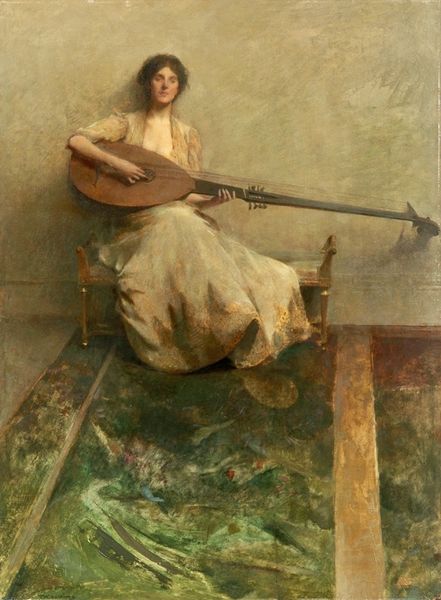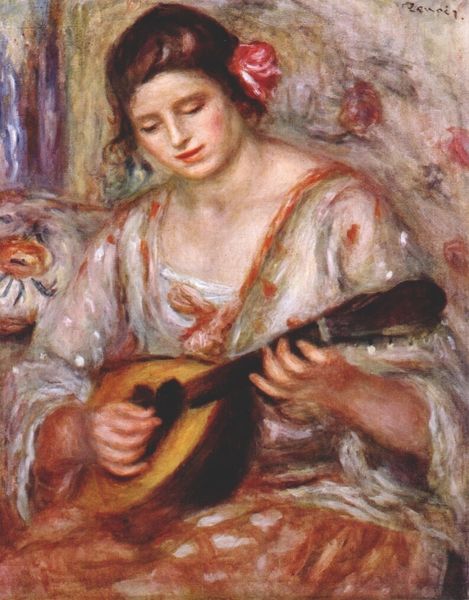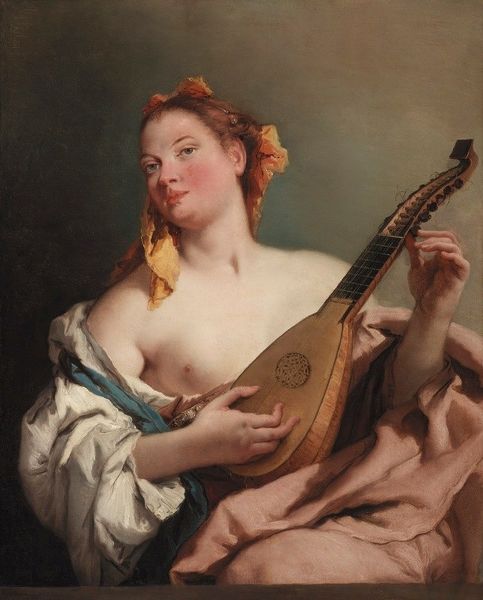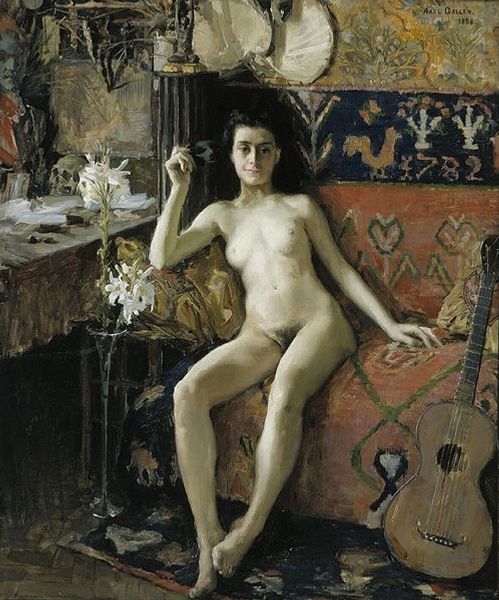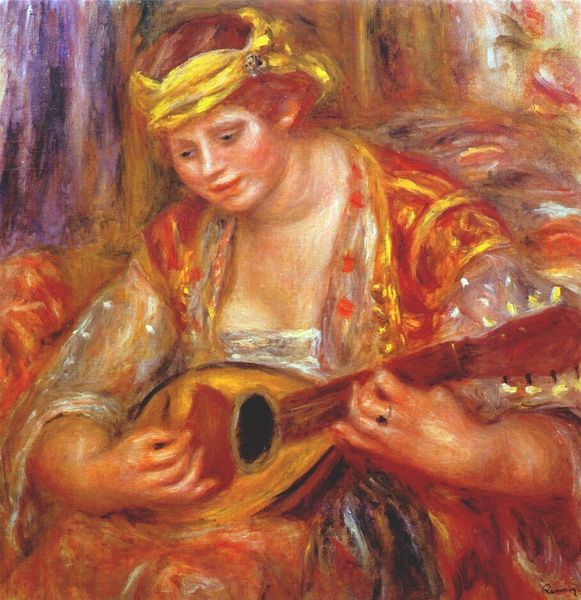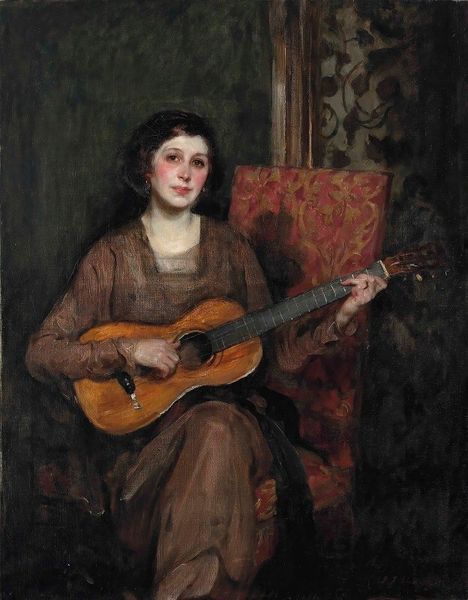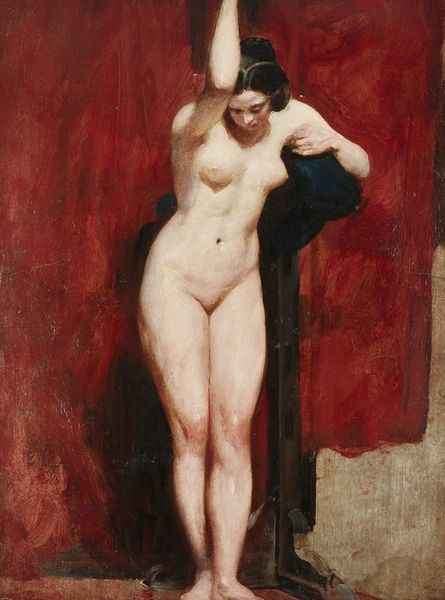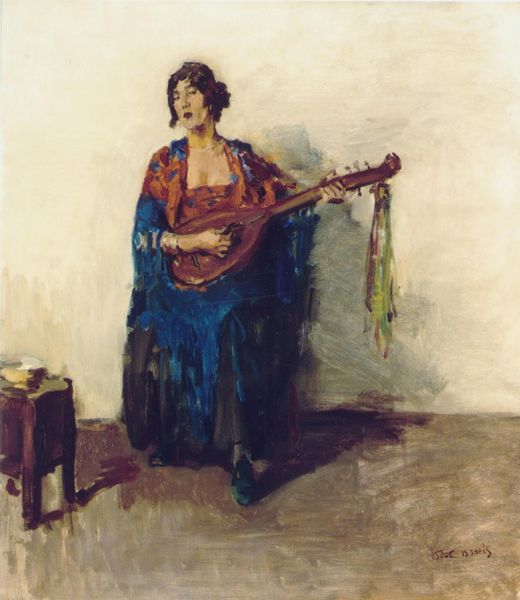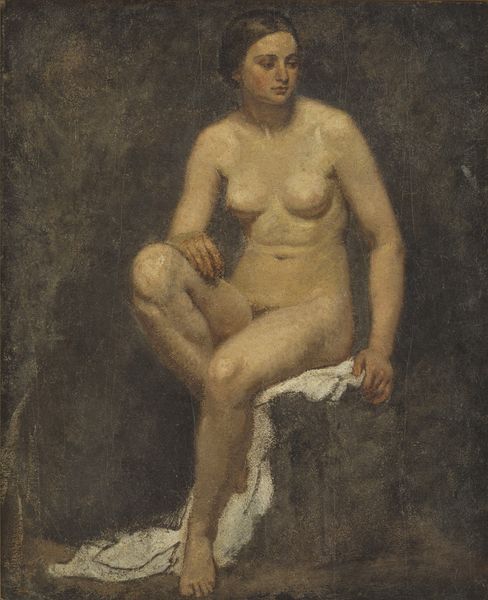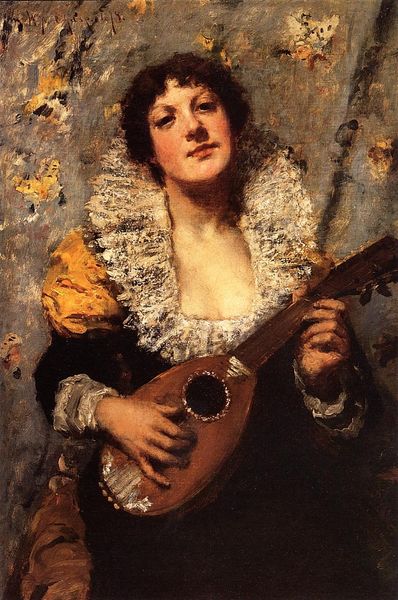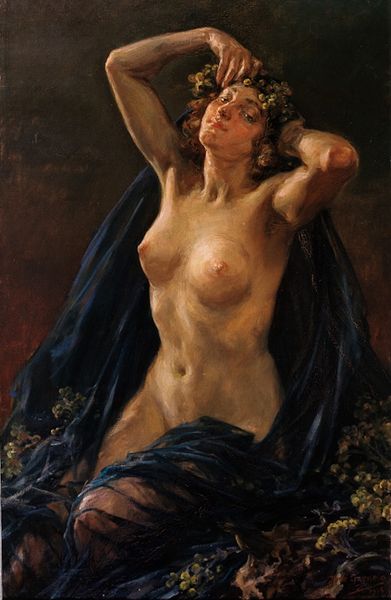
Copyright: Public domain
Editor: Anders Zorn’s 1918 oil painting, "Studio Idyll," offers a somewhat startling, intimate portrayal of a nude woman playing what appears to be a lute. The light is so warm. How do you interpret this work? Curator: For me, "Studio Idyll" resonates with symbols of beauty and tradition. The lute, itself a historical instrument, invokes centuries of artistic representations of music and leisure. Consider how often the nude female form has been employed to signify ideals of beauty, fertility, and even freedom throughout art history. Don't you think Zorn's deliberate use of these loaded images speaks volumes about his dialogue with art history? Editor: Yes, definitely. I can also see some possible connections between Zorn's painting and other depictions of musical muses throughout art history. Are there particular symbols you find most striking or that stand out from his broader oeuvre? Curator: What intrigues me here is Zorn's use of Impressionistic techniques—the soft focus, the broken brushstrokes—to render such traditional imagery. It's as if he's breathing new life into these age-old symbols, perhaps hinting at the ever-evolving nature of cultural memory itself. And also consider the cultural weight and gaze implicit in nude portraits, specifically by male artists such as Zorn. How do those associations, perhaps more loaded in our current moment, inform your understanding of this particular nude and instrument pairing? Editor: That is a lot to think about, for sure. Considering the tradition of nudes, it makes me reconsider her pose and expression. Thank you for helping me think about it more critically! Curator: It's in the conversation between the symbols and our ever-changing cultural understanding that art truly lives. Thank you for making these keen observations and for thinking with me.
Comments
No comments
Be the first to comment and join the conversation on the ultimate creative platform.
